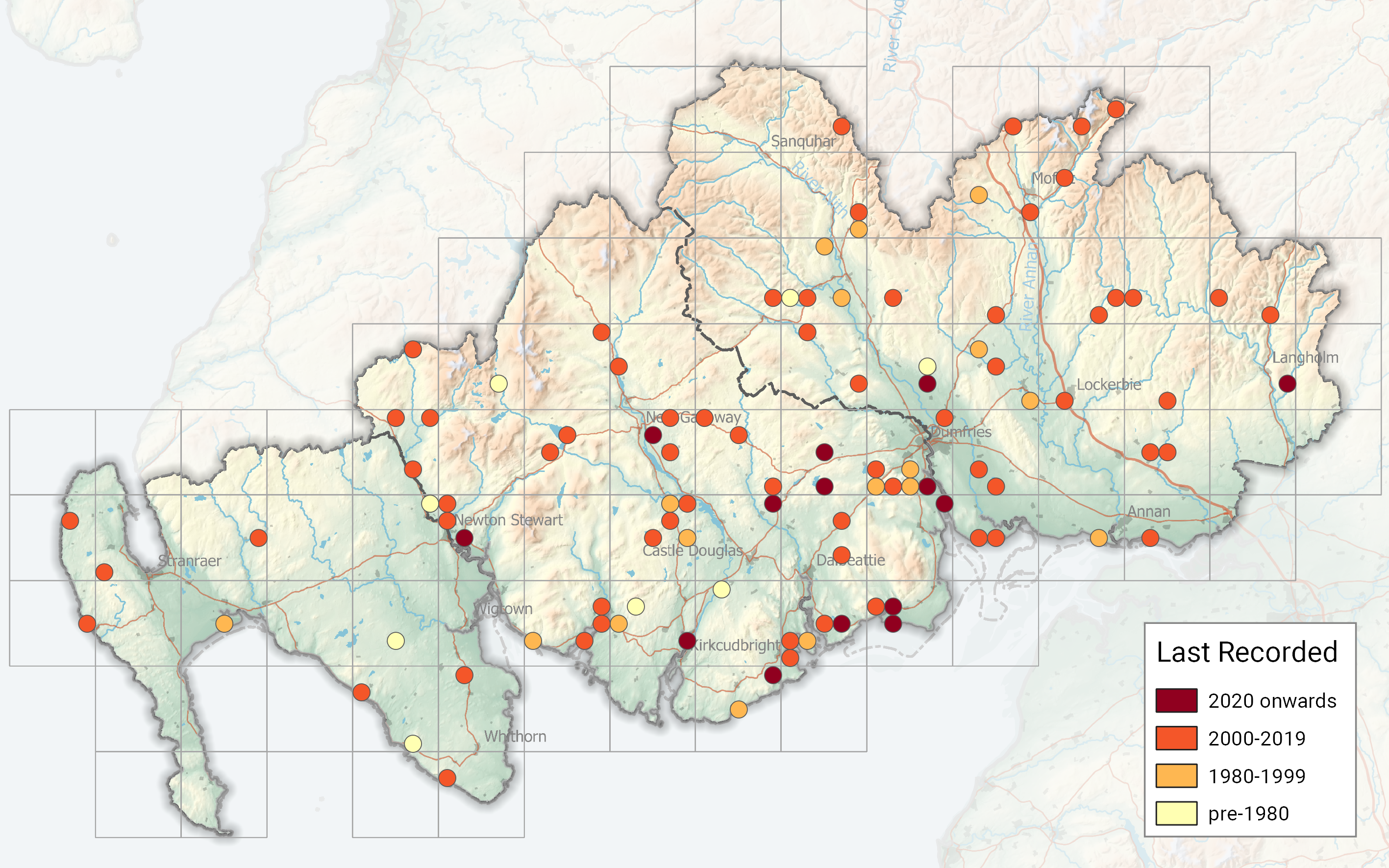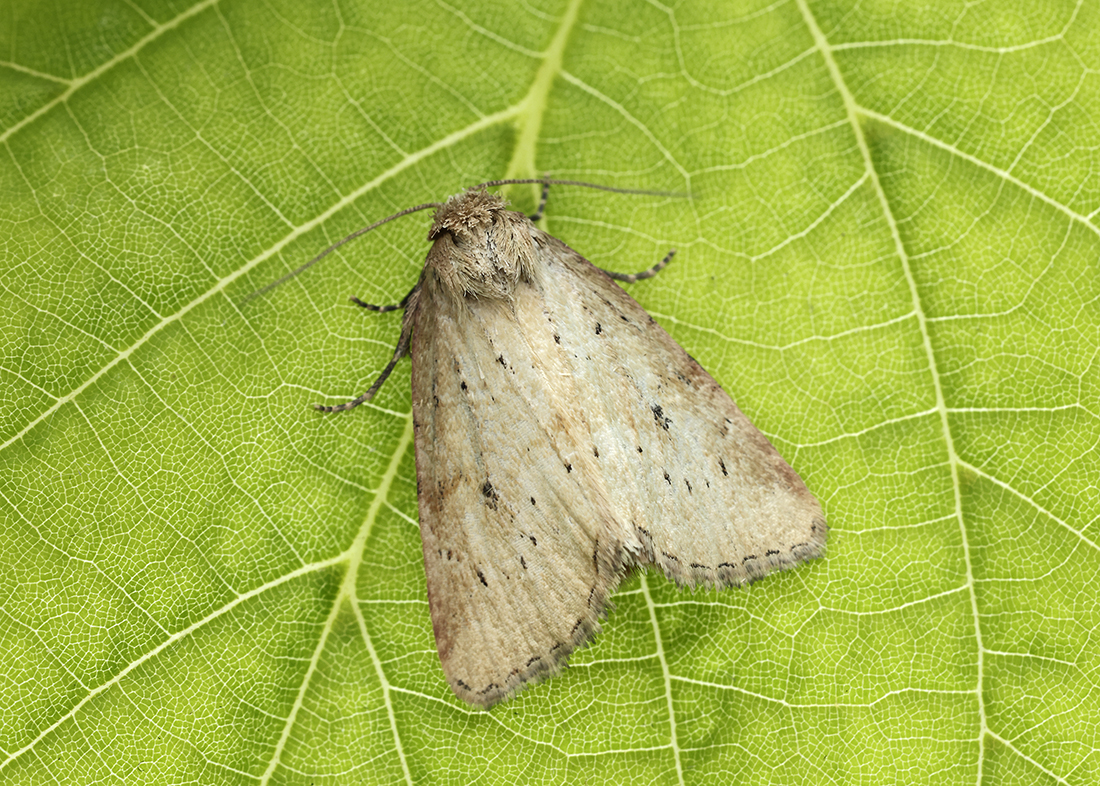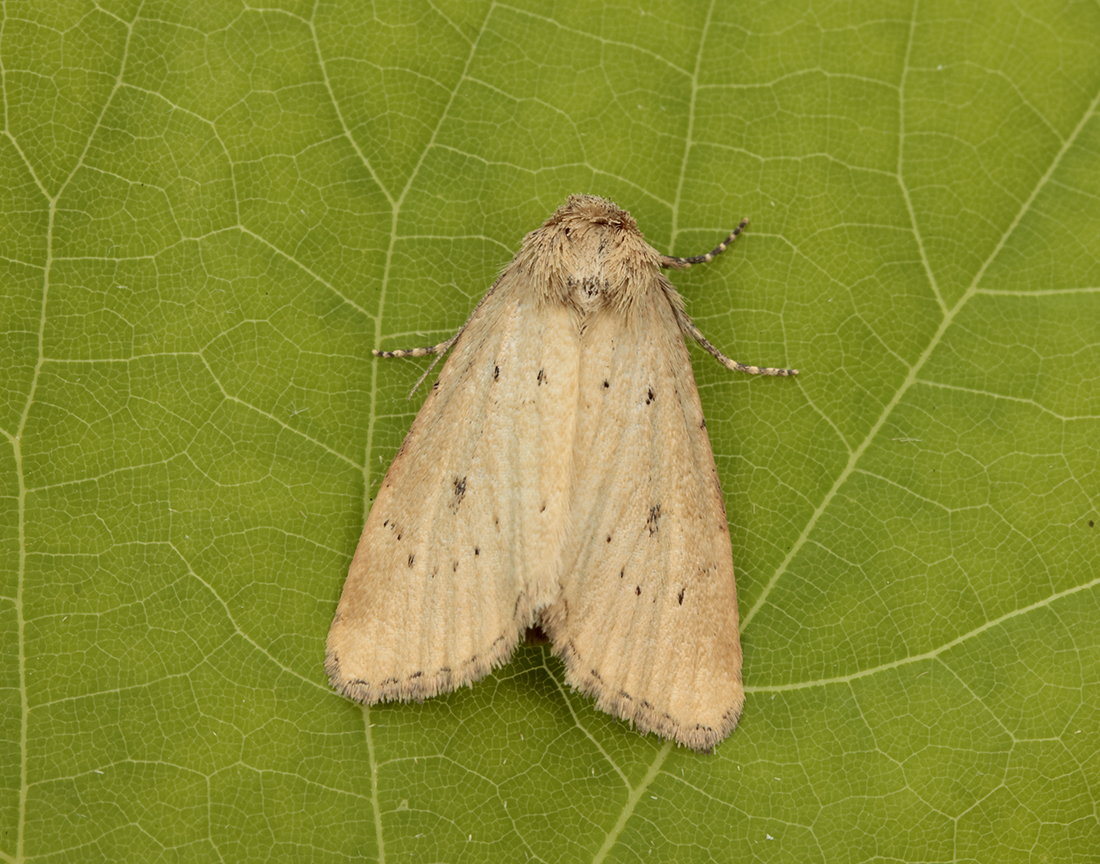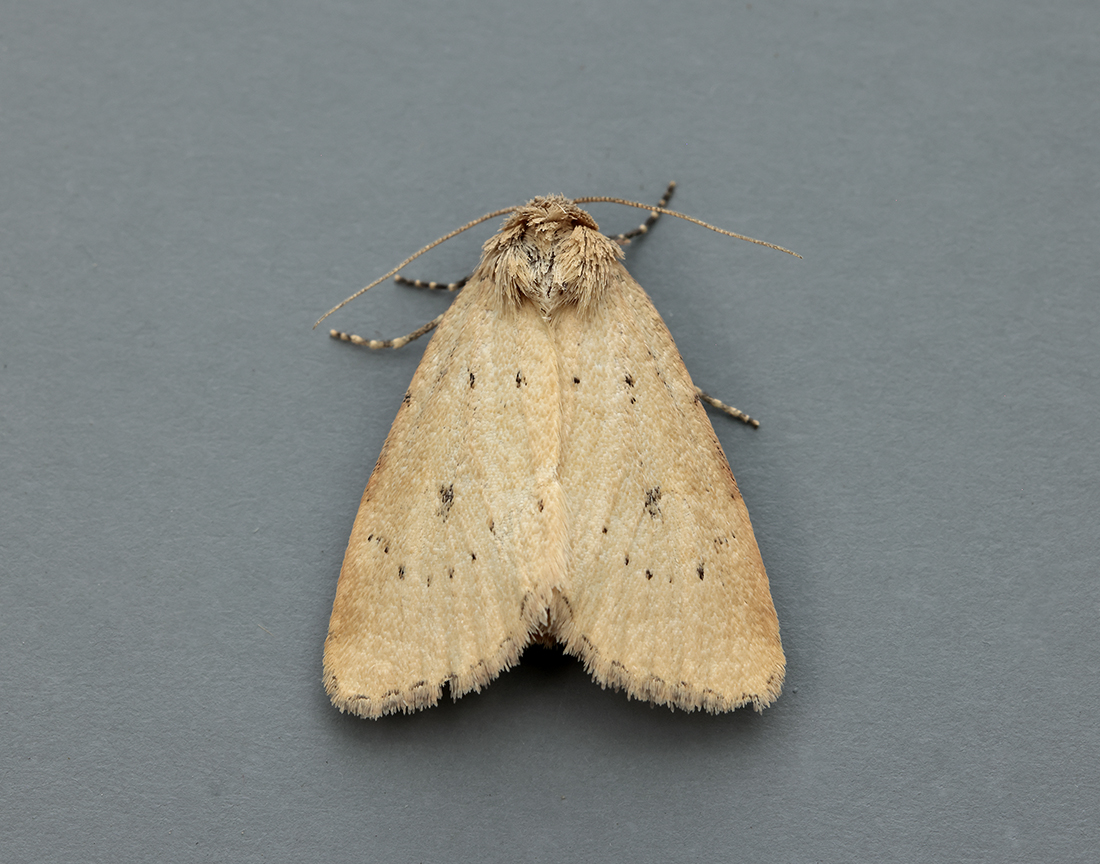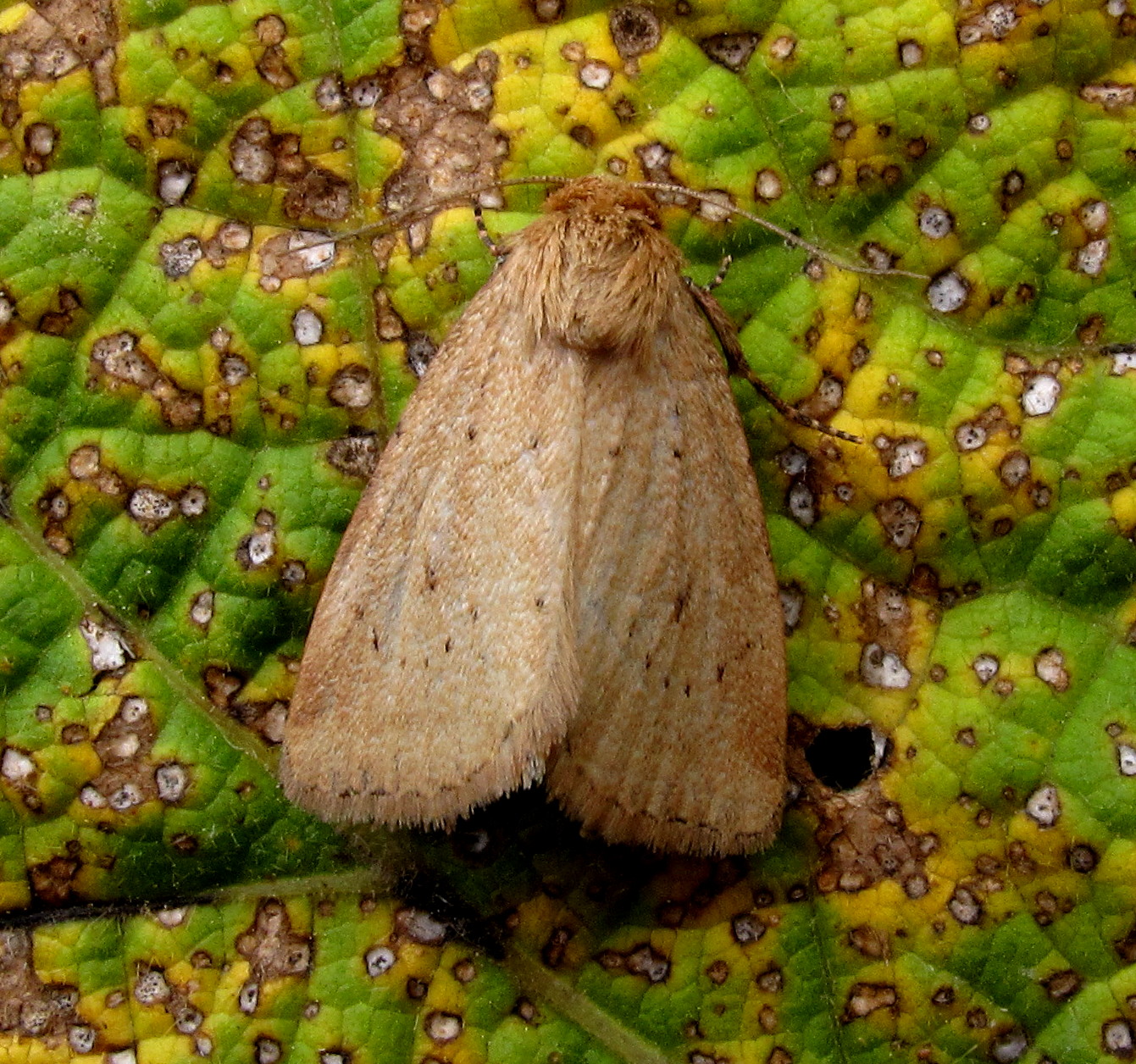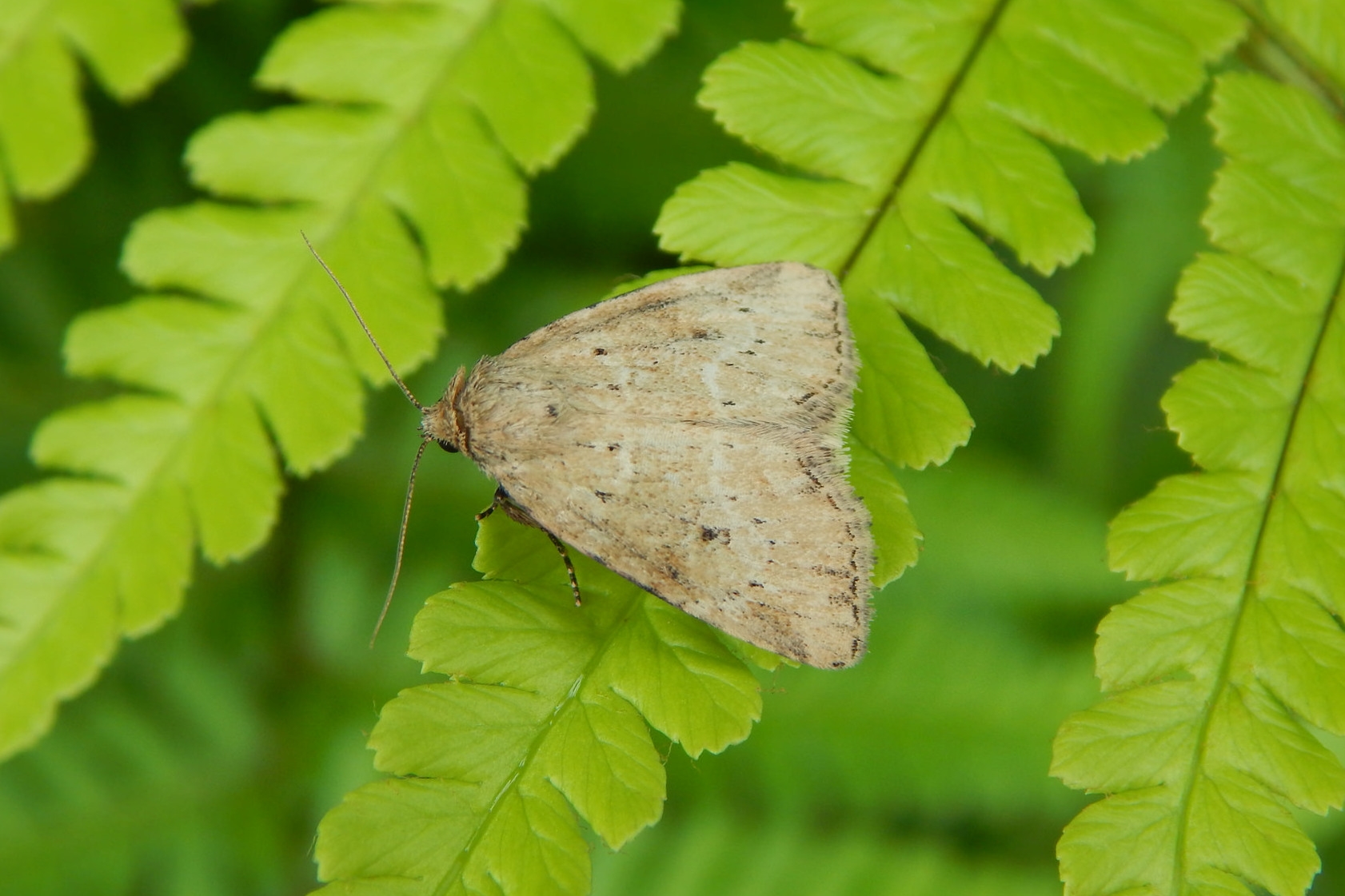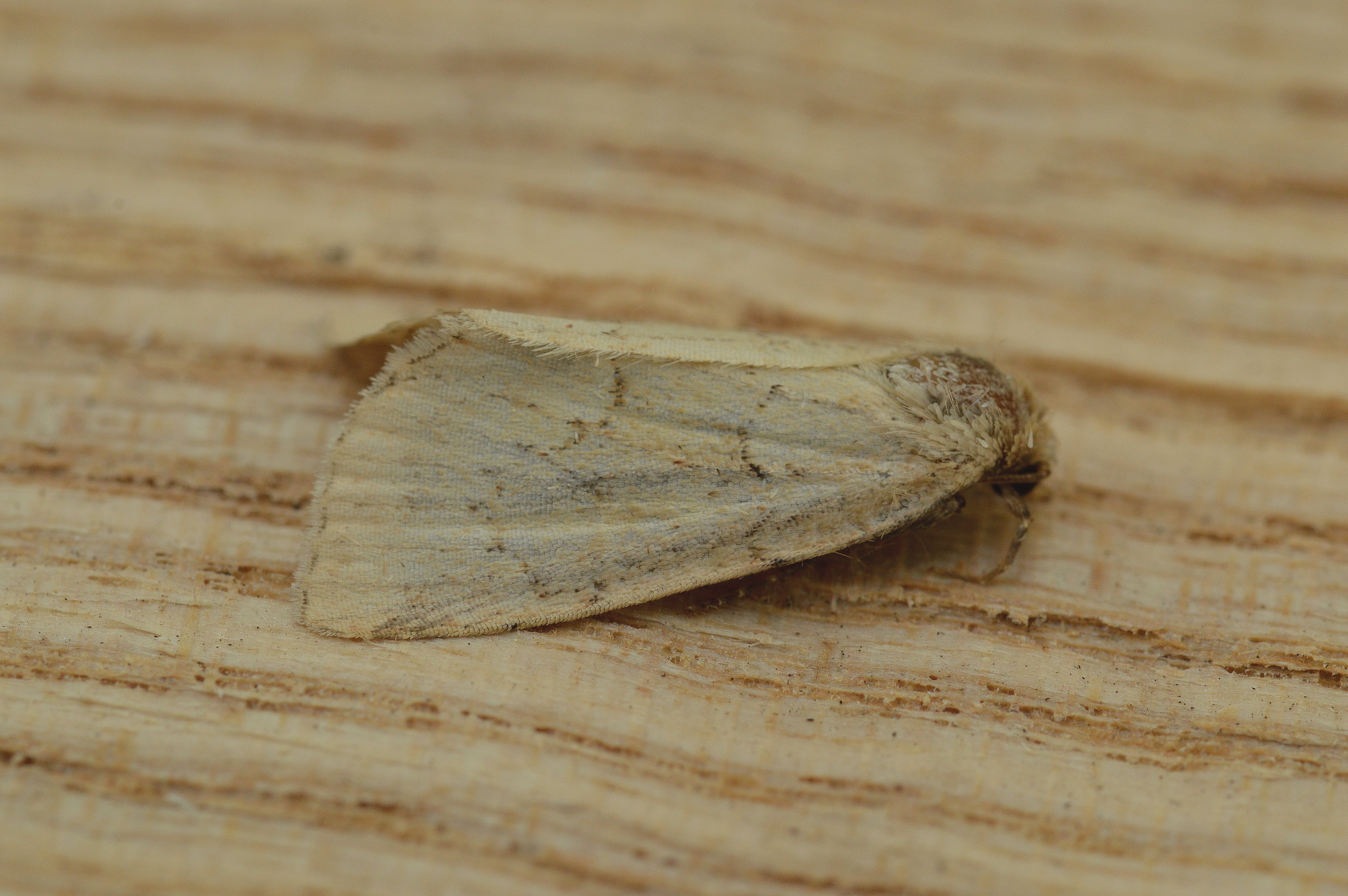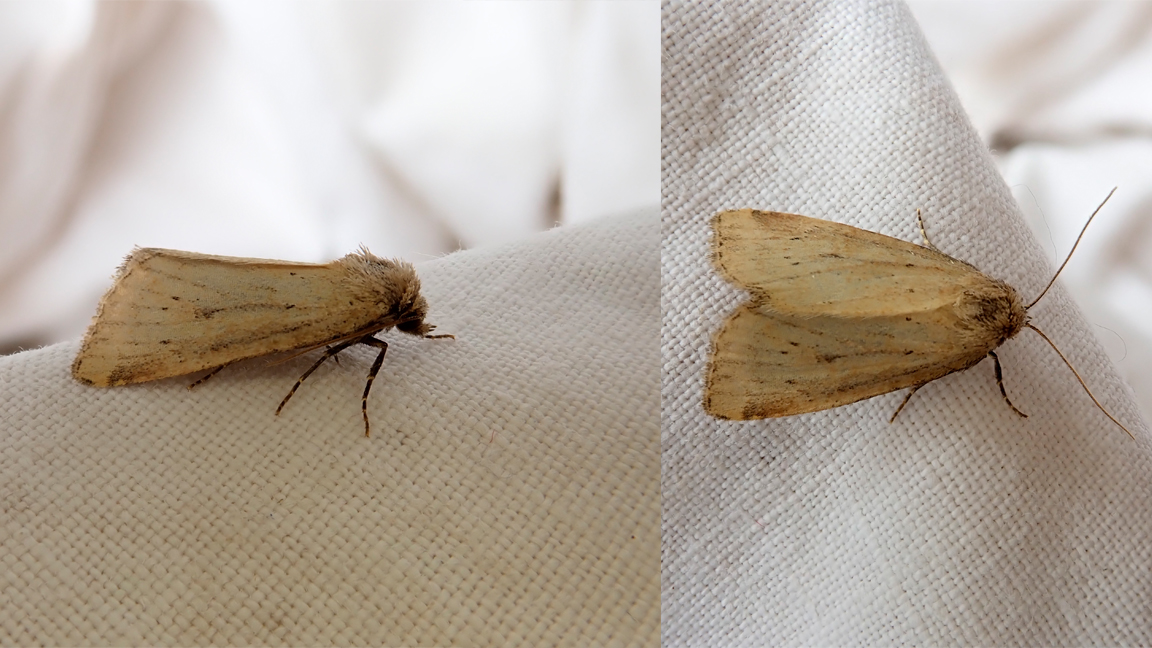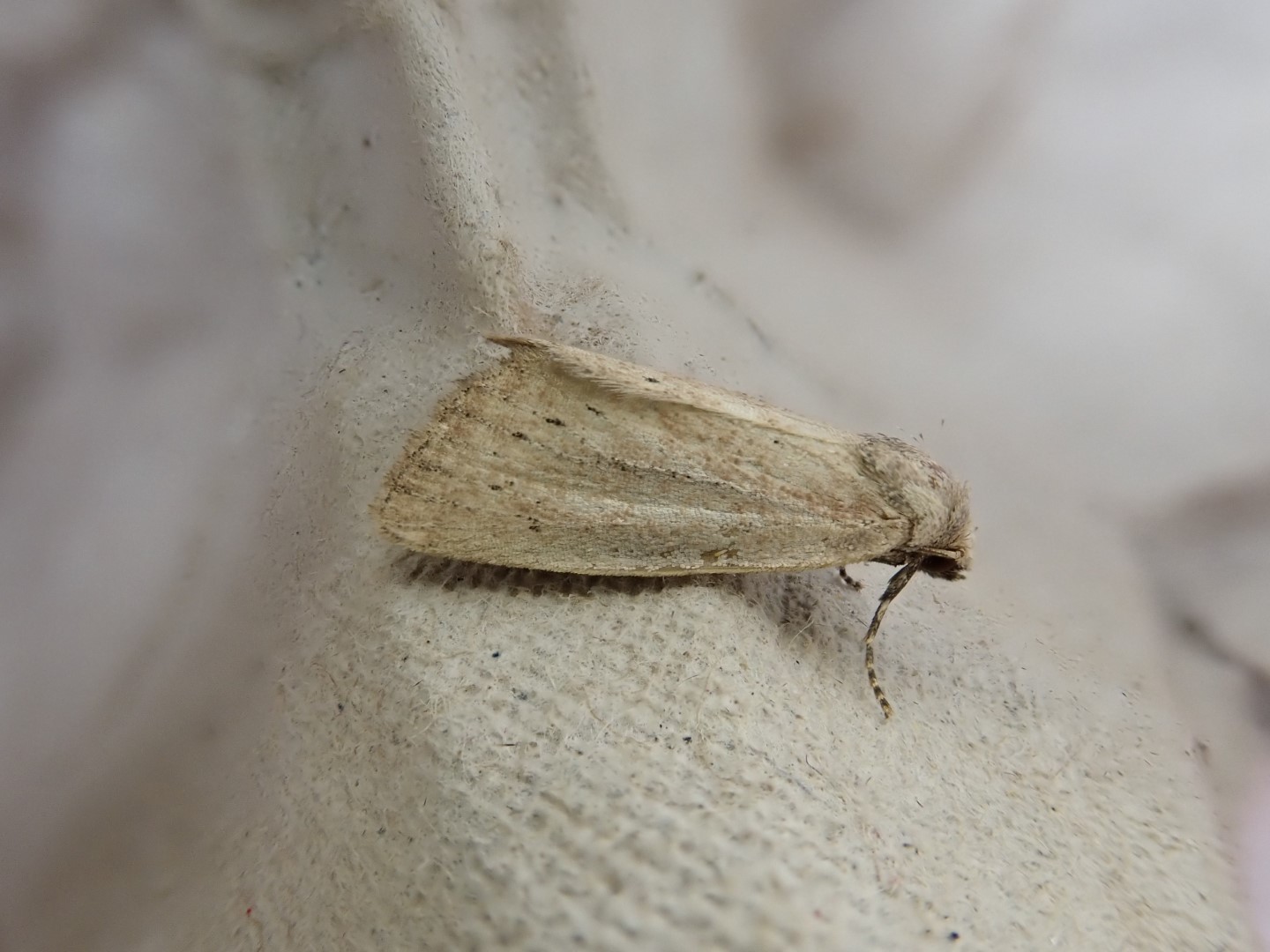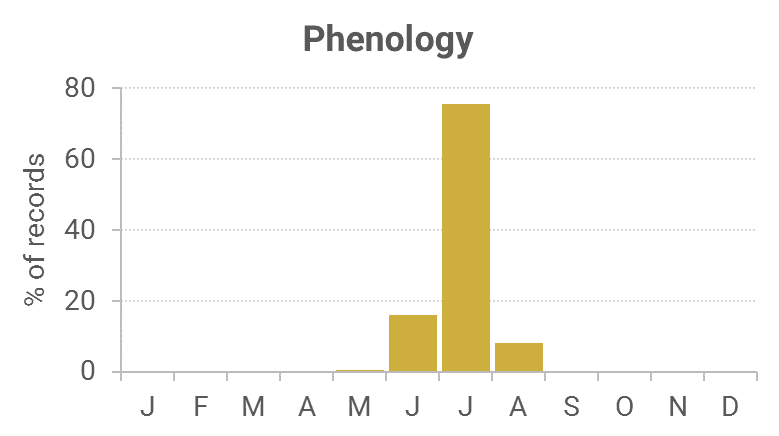Identification
Care required to separate from pale forms of Cloaked Minor, and other small species. The yellowish-straw forewing has a roughly triangular brown blotch near the apex with central cross-lines formed by a series of dots.
Recording Method.
Attracted to light, also occasionally comes to sugar.
Life cycle
One generation. Overwinters as a larva during August to May, feeding inside a stem, with pupation taking place in an underground cocoon.
Larval foodplants
Tufted Hair-grass.
Habitat
Woodland rides and marshes.
History
Robinson-Douglas (1874) was the first to record it having found it during the season in the Castle Douglas area (VC73). K. J. Morton of Edinburgh (1900) while on a visit in July 1899 to Wigtownshire had found this species in the Monreith area. Gordon (1913) in Wigtownshire had found it generally distributed and often common, flying in damp places at dusk. Earliest date was 3rd July 1898.
Archibald Russell (1944) listed it as occurring near Gatehouse of Fleet (VC73) during the years 1942-43. Sir Arthur Duncan (1909-84) during his lifetime had found it at Closeburn, Tynron and Castlehill, Dumfries (all VC72).
During 1974-93 all seven Rothamsted stations recorded two hundred records between them, proving it widespread.
From 1993 to 2010 regular trapping at Kirkton and Cally Woods provided 120 records of the 200 in the period, with the rest from widely scattered sites across the region.

